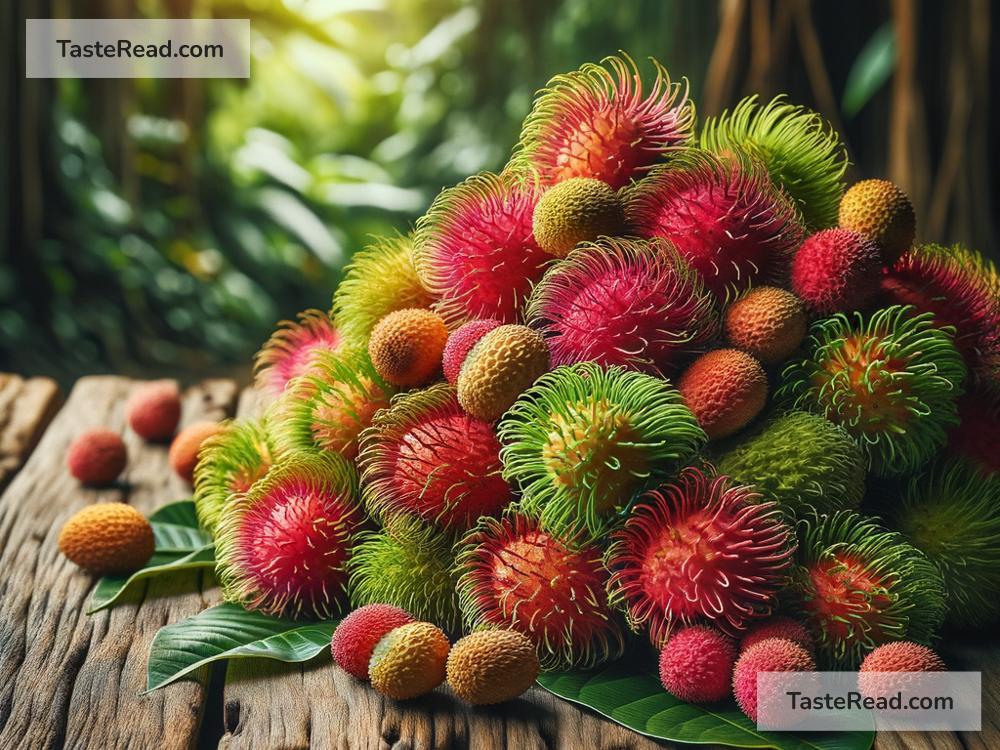The Surprising Link Between Rambutan and Lychee
If you enjoy sweet, juicy fruits, chances are you’ve come across rambutan and lychee. These tropical delights are loved around the world for their unique taste and appearance. At first glance, they might seem very different: rambutan is spiky and hairy, while lychee has smooth skin. But what if we told you there’s much more that connects these fruits than meets the eye? Let’s dive into the surprising link between rambutan and lychee, and uncover why they’re almost like family.
What Are Rambutan and Lychee?
Before discussing the connection between these fruits, let’s briefly describe them. Rambutan is a bright, red or yellow fruit with small hair-like spikes on its surface. Its name comes from the Malay word “rambut,” which means “hair.” Inside, you’ll find a translucent, juicy flesh that tastes sweet with a slightly acidic twist.
Lychee, on the other hand, is smaller and has a smooth, bumpy, red skin. The flesh is also translucent and sweet, but its flavor leans more floral and aromatic compared to rambutan. Both fruits are found in tropical regions, especially in Southeast Asia, and are popular in desserts, smoothies, and other dishes.
The Family Connection
Here’s where the surprising link comes in: rambutan and lychee are both members of the same botanical family called Sapindaceae. This family includes many tropical fruits like longan and pulasan—so if you’ve ever wondered why these fruits taste or look like distant cousins, now you know why!
Both rambutan and lychee grow on trees and thrive in warm climates. The shape and structure of their fruits are also similar. They both have a hard outer shell that protects their juicy interior, and each contains a single seed at the core. While they look different on the outside, their shared family traits become clear once you start peeling them.
Similar Nutritional Benefits
Another surprising similarity between these fruits is their nutritional profile. Rambutan and lychee are not only delicious but also packed with vitamins and minerals that are great for your health. Here’s how they compare:
-
Rich in Vitamin C
Both fruits contain high amounts of vitamin C, an essential nutrient that helps boost your immune system and keeps your skin healthy. Eating either fruit can give you a natural, refreshing energy boost. -
Low in Calories
If you’re watching your calorie intake, you’ll be happy to know that rambutan and lychee are low-calorie fruits. This makes them an excellent snack for people who want something sweet without overindulging. -
Hydrating Properties
Both fruits are juicy and contain plenty of water, which helps keep you hydrated, especially on hot summer days. -
Potassium and Antioxidants
Rambutan and lychee are also rich in potassium, which supports heart health and regulates blood pressure. Additionally, their antioxidants help fight free radicals in the body, reducing your risk of chronic diseases.
The Taste Similarity and Differences
At first bite, you might notice similar qualities in rambutan and lychee. Both are sweet, refreshing, and mildly tangy. However, they each have their own distinct flavor:
-
Rambutan’s Taste: Rambutan is sweeter and creamier, with less of a floral note. It tastes like a blend of grapes and pears with a dash of tropical richness.
-
Lychee’s Taste: Lychee is also sweet but has a stronger floral scent and taste. It’s often described as having hints of rose or citrus.
Despite these differences, many people agree that if you enjoy one fruit, there’s a good chance you’ll enjoy the other.
Cultural and Culinary Use
In many countries where rambutan and lychee grow, they’re not just a snack—they’re an important part of the local culture and cuisine. For example, both fruits are often served fresh or used in desserts like jellies, sorbets, and ice creams. You’ll also find them as a topping for shaved ice or mixed into fruit salads.
In drinks, lychee is a popular flavor for teas, cocktails, and juices. Rambutan, while less common in beverages, has a similar versatility. Some people even use their seeds to make herbal remedies or oils.
Are Rambutan and Lychee Interchangeable?
Given their similarities, you might wonder: can rambutan and lychee be used as substitutes for one another in recipes? The answer is mostly yes! Their textures and sweetness levels work well in similar dishes. However, if a recipe specifically calls for lychee’s floral notes, rambutan might not provide the same flavor.
Conclusion
Rambutan and lychee may look completely different at first glance, but their surprising link runs deeper than appearance. As members of the same botanical family, they share traits like nutritional benefits, juicy textures, and tropical sweetness. Whether you prefer the spiky rambutan or the smooth lychee, both fruits are a testament to the incredible diversity of nature.
So the next time you bite into one of these fruits, take a moment to appreciate how they’re connected. Who knows? You might discover a newfound love for their fruity relatives, too.


